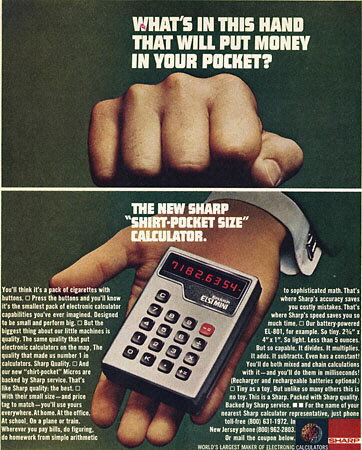Sharp EL-801
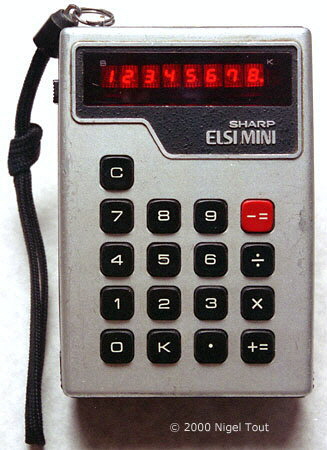
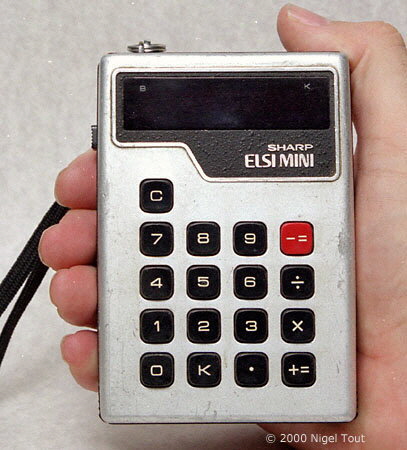
Sharp EL-801
Distinctive features: The first use of low power consumption CMOS (Complementary Metal Oxide Semiconductor) integrated circuits in a calculator.
Technical details:
Display is 8 digits, red LED.
4-function.
Integrated circuits from Toshiba - T3103 (28-pin ceramic package, performing all logic functions), T3104 (10-pin TO-5 can, containing three shift registers and the 40-kilohertz clock), T1271 (16-pin plastic package, display drivers).
6v (4x AA).
74 mm x 103 mm x 29 mm (3" x 4" x 1.2").
Introduced August 1972.
Made in Japan.
Cost: US$129-95 [about £48 GBP].
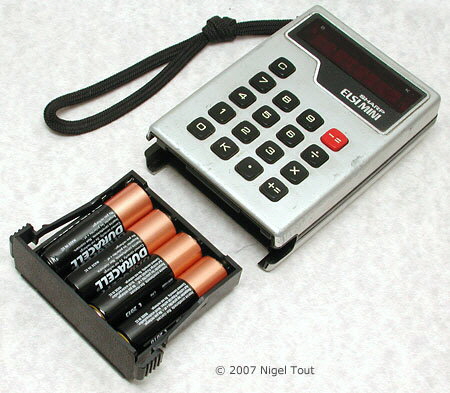
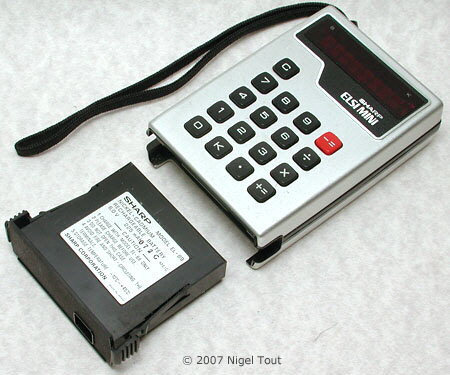
The battery holder clips into the base of the calculator. Two types can be used, one taking four AA cells as shown on the left, and the other is a rechargeable battery pack, as shown below.
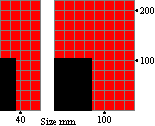
The rechargeable battery pack.
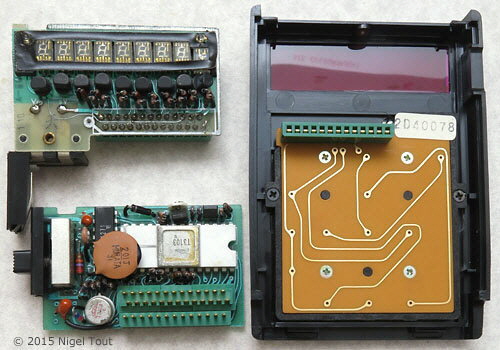
Inside the EL-801.
The display board, upper-left, plugs into the processing board, lower-left. The assembly is then turned over and plugged into the back of the keyboard, on the right.
The integrated circuits are on the processing board.
This was the first calculator to use the now ubiquitous CMOS (Complementary Metal Oxide Silicon) type integrated circuits. Since these have a much lower power consumption than previous types, this was another step along the road to long battery life. However, in this model battery life was greatly reduced by the LED display which was still employed, which had a high power consumption.
A definite sign that a calculator is an early one is the use of plugs and sockets - these are expensive, but only a small proportion of the cost when the rest of the electronics is expensive.
Note that many early calculators had a wrist strap like this one. They could be used as safety straps for these expensive instruments if you had to walk round while adding things up, say in a store room.
The journal Electronics in August 1972[1] gave information about the circuitry of the EL-801, from which the following is extracted: "The biggest plus of the C/MOS circuits is low-power operation; one transistor of the pair is always off and current only flows in brief bursts during the switching period. In Sharp's calculator, total circuit power consumption - including logic circuits, three registers, and clock generator - is only 2 milliwatts. This is about 1% of the power drain of comparable p-channel MOS circuits [commonly used at the time].
Basic calculator functions, which include a constant, are performed by two LSI C/MOS chips. Initially Sharp engineers had difficulty in fitting circuits on reasonable size chips because C/MOS in general requires twice as many elements as p-MOS. But advances in circuit design made it possible to reduce the number of elements by about 35%.
One of the two chips, which has about 3,300 elements in a 28-pin ceramic package [T3103], performs all logic functions. The other, with about 1,500 elements in a 10-pin TO-5 package [T3104], contains three shift registers and the 40-kilohertz clock."
The keyboard was also a pioneering usage of conductive rubber contacts, in place of metal contacts.
For further information about Sharp Corporation and its calculators visit the Calculator Companies section of this site.
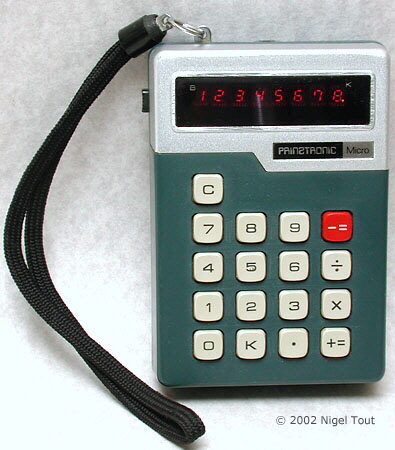
The Prinztronic Micro is a version of the Sharp EL-801 in a slightly cheaper plastic case, made for sale in the British Dixons chain of camera and electronic goods stores.
The effect of miniaturisation of electronics
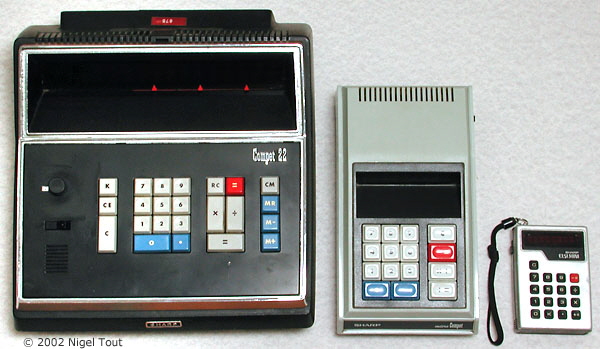
Photograph showing the effect of miniturisation of the electronics on the size of 4-function calculators.
From left to right, Sharp Compet 22 of 1968, Sharp QT-8D of 1969, Sharp EL-801 of 1972.
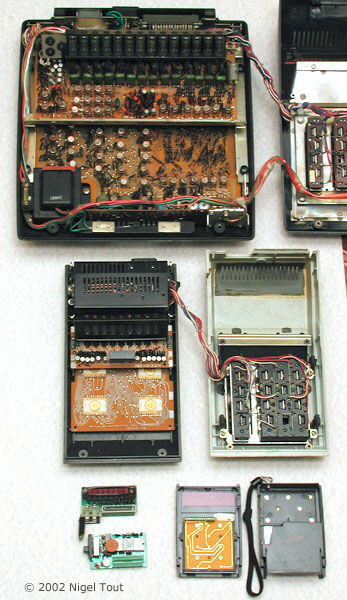
The photographs above and on the left illustrate the size reduction over about 4 years made possible by developments in integrated circuits.
On the left, from top to bottom:
Sharp Compet 22 of 1968, with many medium-scale integration (MSI) integrated circuits, AC powered.
Sharp QT-8D of 1969, with four large-scale integration (LSI) integrated circuits, AC powered.
Sharp EL-801 of 1972, with two CMOS LSI integrated circuits, battery powered.
References
Hand-held Calculators
Vintage Calculators
Text & photographs copyright, except where stated otherwise, © Nigel Tout 2000-2026.
